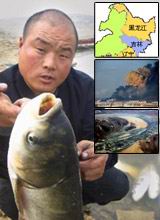<SPAN lang=EN-US style="mso-font-kerning: 0pt; mso-bidi-font-family:
Looking for more insights?
Sign up to stay informed about our latest article releases.
The recent attempt to cover up pollution resulting from a petrochemical explosion in northeast China has focused new attention on China's runaway economic development and the toll this has taken on the environment. Environmentalists say that the incident, which saw 100 tons of benzene and other toxic chemicals poured into the Songhua River, was a manifestation of a much more serious structural problem within the country. Although the catastrophe has resulted in the resignation of the head of the State Environmental Protection Administration, endemic corruption and the government's weak implementation of regulations mean that more such incidents could occur. Environmentalists say the incident has highlighted the need for new approaches to environmental governance and transparency in China.

<SPAN lang=EN-US style="mso-font-kerning: 0pt; mso-bidi-font-family:
Sign up to stay informed about our latest article releases.